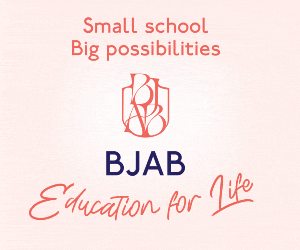3: Don’t be content with content!: This third mindset shift opens the door to what I call ‘whole brain speaking’. The key idea is to go the extra mile, go beyond a singular focus on the information you want to share with the audience. Far too many presentations are left brain focused. I advocate tapping into the right brain. That’s where you’ll find imagination, intuition, enthusiasm, passion, emotion. Yes, the content of your presentation is very important. It’s a necessary, but not sufficient piece of the puzzle. You should focus on the content, on the structure and the logic of your talk. You should prepare and rehearse.
Those things are fundamental. But then go beyond that and think about the connection, about the relationship, about bringing a bit of your heart – your emotion and enthusiasm and personality – to the occasion. The poet Samuel Coleridge said it well: “What comes from the heart goes to the heart.” As a speaker, you should try to engage the right brain – your own and that of the audience.
Tapping into the right brain doesn’t mean abandoning content and valuable information. Far from it. When speakers tap into the right brain, they’re engaging in value- added speaking.
4: The audience supports you: This shift moves you from self-consciousness to support-consciousness, another critical step in the transformation to authentic speaking. With the first three shifts, you’ve begun to think differently about speaking to audiences. You’re moving away from the very idea of public speaking toward speaking to one person at a time, having a conversation. You’re not focusing exclusively on the content of your speech and opening yourself up to the right brain elements of heart, emotion, connection, relationship and imagination.
Now you’re ready to take another very big step: the recognition that the audience actually supports you. You’re ready to shift from being self-conscious to being support- conscious. This liberates you to become a more authentic speaker.
The nearly universal fear of public speaking is rooted in this largely subconscious notion that the audience is somehow against us or judging us. The reality is the audience supports the speaker. The audience wants you to do well, to succeed, to be engaging, to be informative and motivating. Most of all, the audience wants you to be comfortable being yourself. By accepting the idea that the audience supports you, you’re able to enter any speaking situation with a positive comfort zone mindset. The uneasy feeling of danger and fear naturally and effortlessly recedes.
Being support-conscious means that we stop focusing on the negatives, on the potential pitfalls, on what’s at stake, on what could go wrong. We allow ourselves to focus on the positives, on this wonderful opportunity to share our ideas and insights with other people. Think about it. What is there to be self-conscious about, to be afraid of, if the audience supports us and wants us to do well? Even if you imagine the audience to be hostile for some reason, it’s far better for you to believe the audience supports you. Your positive expectation will reduce your anxiety, improve your performance, and enhance your experience of the occasion. It becomes a self-fulfilling prophecy.
5: Make sure the real you shows up: The first four mindset shifts culminate naturally in this final stage. Fear-free, authentic speaking ultimately means making sure the real you shows up to do the talking. If you’re fearful and ill at ease, the real you has a difficult time breaking through those barriers and making an appearance. If you’re stressed out and full of trepidation, you’re sending a poor, frightened substitute to give your speech. Your goal should be to let the natural, authentic, comfortable ‘you’ give the presentation, not a self-conscious, overly scripted, programmed, stressed-out version of yourself.
How will you know whether the real you actually shows up? Your body sends unmistakable signals. If your heart is pounding and your breathing is shallow and rapid, this is not the real you. If your palms start sweating and your knees knock and your voice quivers, this isn’t the real you.
The real, authentic you is the person you know yourself to be when you’re at ease. I call this the ‘best friend’ test. You should visualize how you feel when you’re talking with your best friend and bring that person to the podium to give your presentation. Charisma comes from being poised and comfortable inside your own skin in front of an audience. Let your natural charisma shine.
Make these five mindset shifts and you’ll successfully overcome the ADD problem. You may even experience the joy of speaking. And you’ll seize the power that is your natural birthright – your authentic Podium Power. You and your audiences will be glad – and much relieved – when you do.
Matthew Cossolotto is a former Nato speechwriter and author of several self-help books. He conducts public speaking workshops and other Personal Empowerment programs in Brussels and beyond.
www.ThePodiumPro.com, Matthew.Cossolotto@gmail.com







